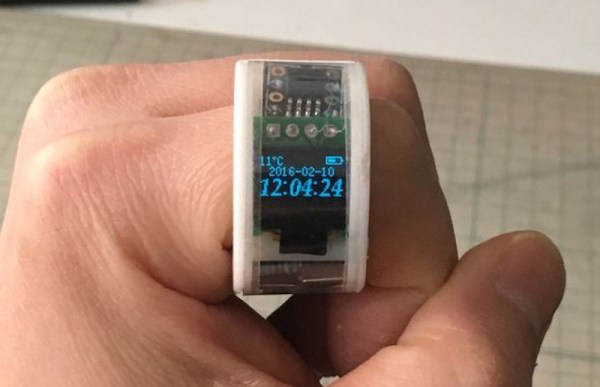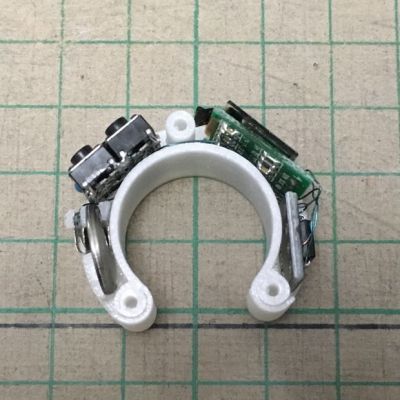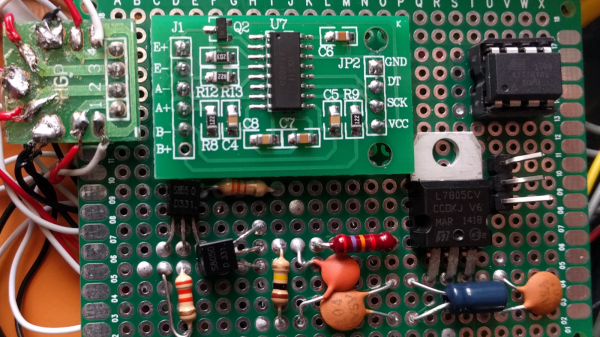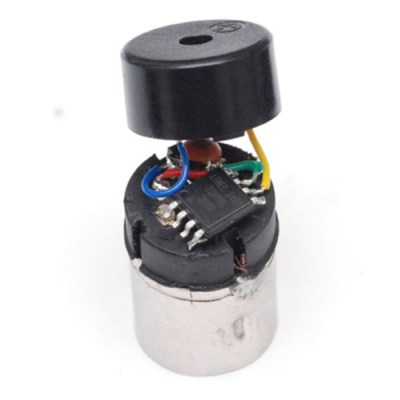[Captain Credible] is a chiptune music artist. He wanted to release an EP, but a regular old em-pee-three was too lame for him, so he made a tiny board with a coin cell, an ATtiny85, and a 3.5mm socket on it.
Rather than just writing some code to generate the tones for a pre-composed song, his “Dead Cats” EP generates the music itself. Using the arduino-tiny library, which adds the tone() function to the ATtiny, he has the chip pick its own time signature, key, subdivisions, and tempo. The melody and drum beat is randomly generated into an array. In addition to that, there are some code “one-liners” which insert unique sounds. After that the code just loops through the music.
If you don’t like the song, simply unplug the audio cable and plug it back in. The 3.5mm jack he chose has a built-in micro-switch, so the board is only powered up if someone is listening. If you’d like to see the circuit diagram, purchase the EP, or take a look at the code, all of that is available on his site.



 The current iteration is complete and builds upon
The current iteration is complete and builds upon 
 Now in all honesty, the Chromecast gets hot but the amount of power it draws when not in use is still pretty negligible compared to the draw of your TV. Every watt counts, and [Ilias] took this as an opportunity to refine his skills and combine a system using an Arduino, Bluetooth, and Android to create a robust power switch solution for the Chromecast.
Now in all honesty, the Chromecast gets hot but the amount of power it draws when not in use is still pretty negligible compared to the draw of your TV. Every watt counts, and [Ilias] took this as an opportunity to refine his skills and combine a system using an Arduino, Bluetooth, and Android to create a robust power switch solution for the Chromecast.

 The whole thing is so small it fits inside a MIDI plug and can run off the power supplied by the MIDI output, driving a small pizeo buzzer. Considering that the ATTiny85 has just 8Kb of memory and 512 bytes of RAM, this is no small feat (get it?). To create the sound, [Mixtela] simply drives the buzzer with PWMed square waves, creating the glorious early chiptunes sound that every retro gamer will recognize.
The whole thing is so small it fits inside a MIDI plug and can run off the power supplied by the MIDI output, driving a small pizeo buzzer. Considering that the ATTiny85 has just 8Kb of memory and 512 bytes of RAM, this is no small feat (get it?). To create the sound, [Mixtela] simply drives the buzzer with PWMed square waves, creating the glorious early chiptunes sound that every retro gamer will recognize.










